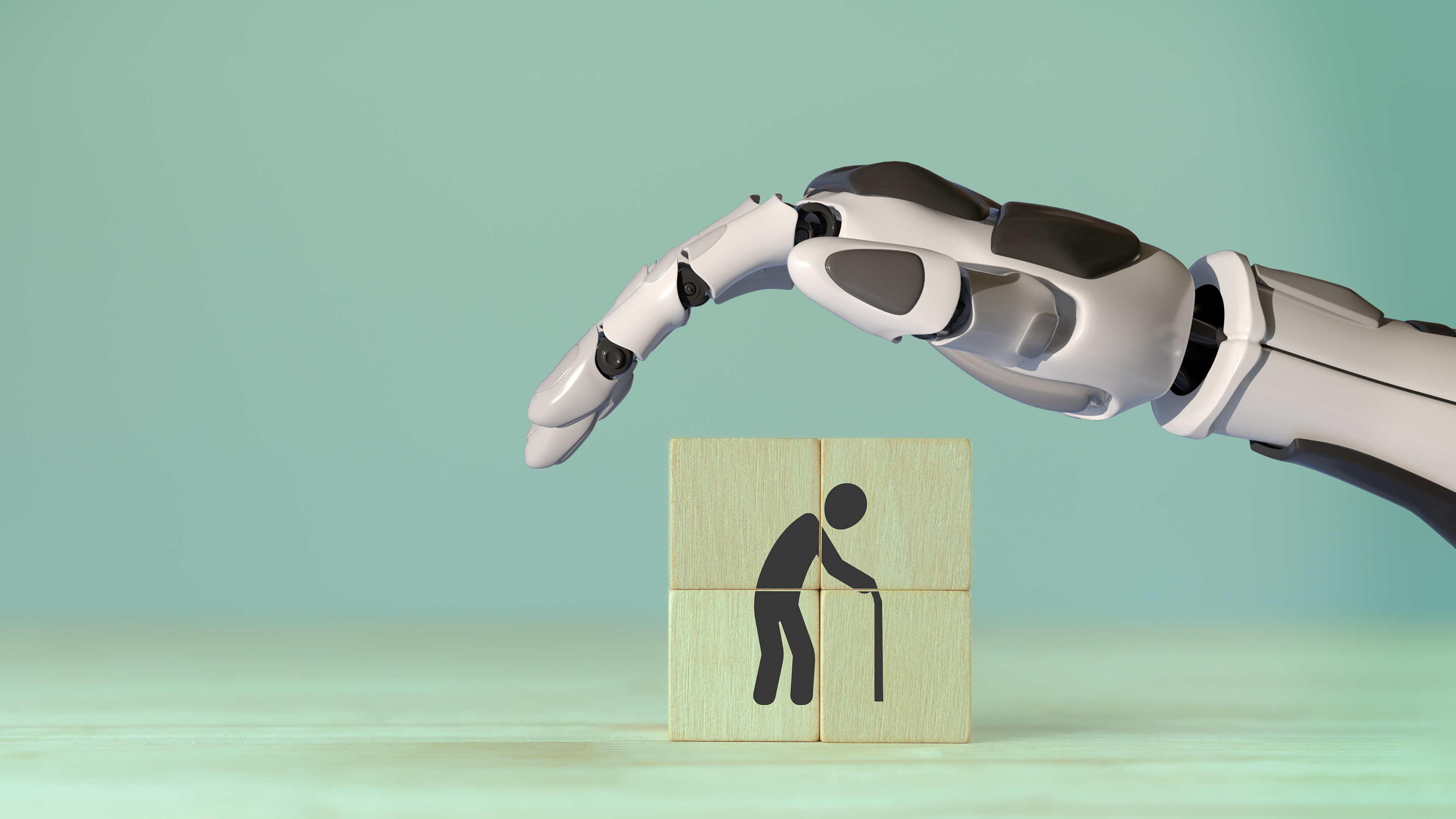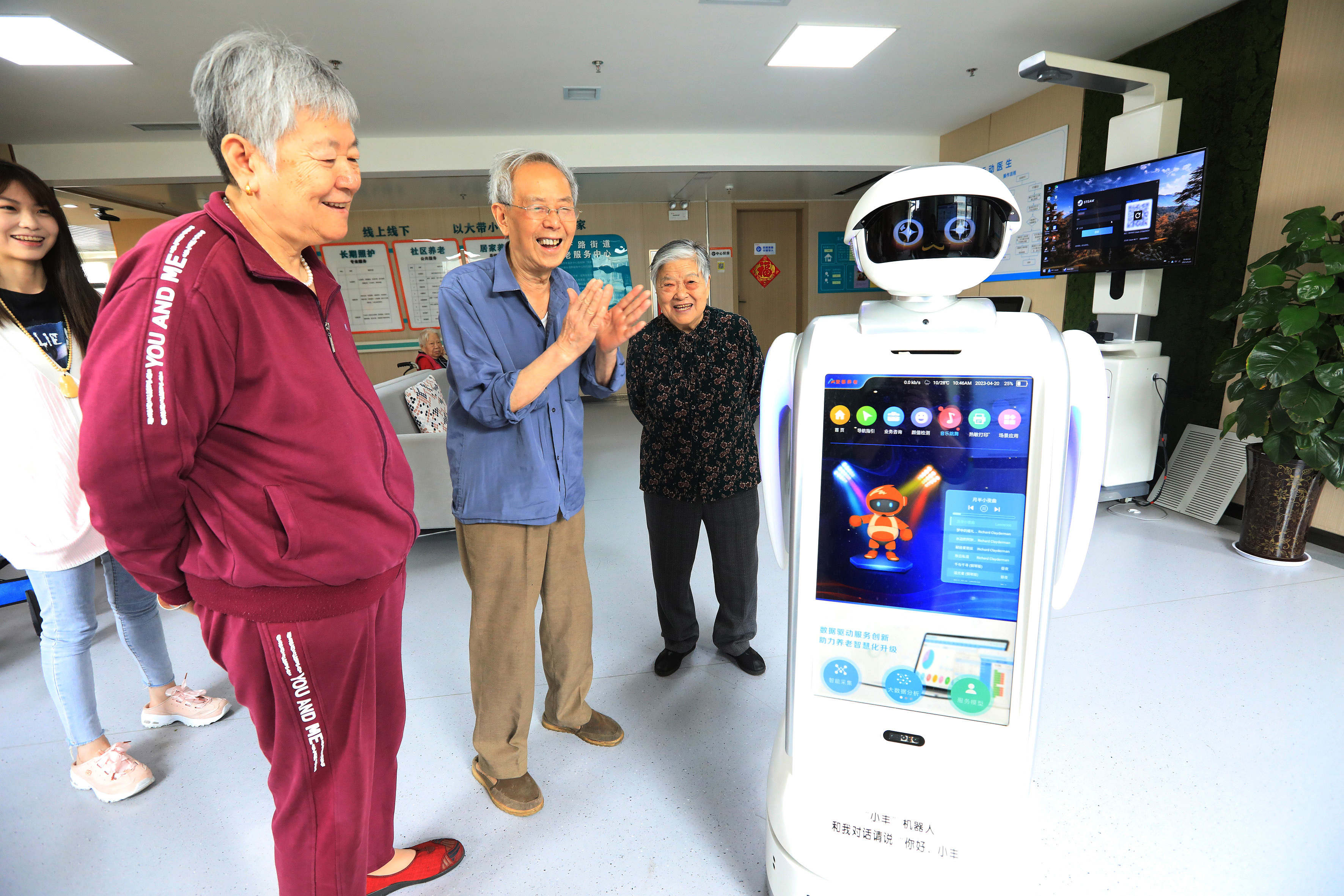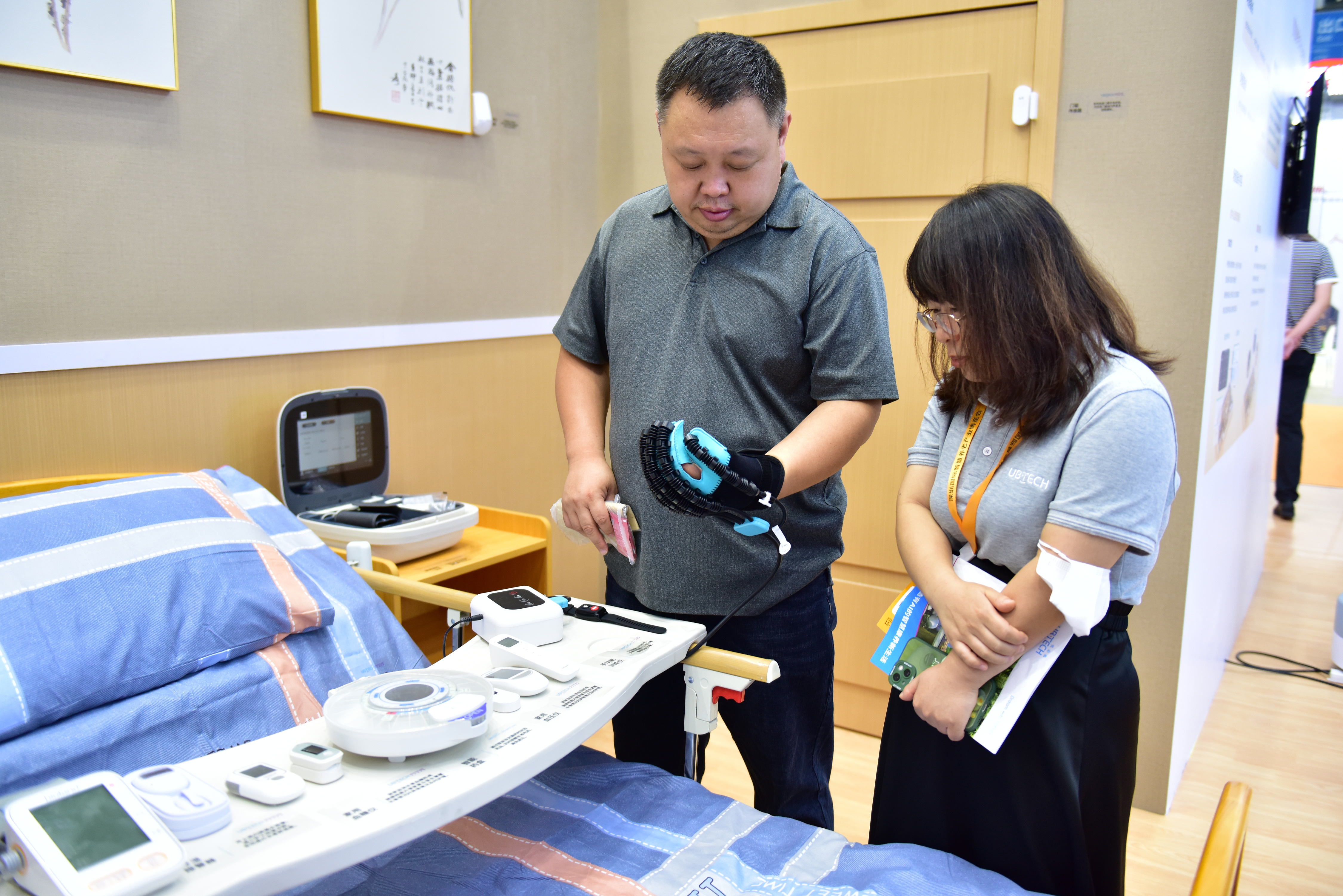
Representative image. /CFP
Representative image. /CFP
Gai Haohao was pretty excited when she started using a cleaning robot. Out of curiosity, she even followed the small machine and removed obstacles from its path while it was moving around her house.
"The robot responds with an enthusiastic tone when I say a preset command. And it can remember the routes that it needs to go around," said the 77-year-old, who lives in Beijing.
Gai's daughter bought the robot for over 6,000 yuan (about $820) last year when Gai's live-in caregiver had to leave for a few months. After using it for a few days, Gai found that the robot can reduce the burden of cleaning the floor, but it has its limitations.
"It could get stuck when there's a large obstacle. Once, I praised the robot, saying it did a great job. But the robot said it didn't understand what I said," Gai laughed. "It doesn't have arms and can't clean other places. The caregiver cannot be replaced easily."
Rising demand for senior care
Data from the National Health Commission show that the number of seniors over 60 years old in China is predicted to soar from 280 million in 2022 to 400 million by 2035. As China's population rapidly ages, the demand for elderly care rises as well.
There are three major scenarios for elderly care in China, namely at home, in the community and in the elderly-care institution. The vast majority of Chinese seniors, about 90 percent, will spend their late years at home.
Traditionally, elderly people rely on their children to take care of them when they need help. But nowadays, parents and their adult children usually live in different houses or cities due to new lifestyles caused by urbanization.
More than half of China's elderly population is comprised of elderly individuals living alone, according to the Ministry of Civil Affairs. Meanwhile, about 42 million elderly people over 60 years old in China experience varying degrees of disability.
However, the country faces a critical shortage of staff in the nursing workforce. Industry insiders estimated that the shortage of elderly care workers stands at over 10 million.

Senior citizens interact with a robot at an elderly care center in Jinshui District, Zhengzhou, central China's Henan Province, April 20, 2023. /CFP
Senior citizens interact with a robot at an elderly care center in Jinshui District, Zhengzhou, central China's Henan Province, April 20, 2023. /CFP
Development of senior care robots
China hopes technology can offer a solution. In 2021, the National Health Commission published a five-year plan for developing smart elderly care. The senior care industry has also been highlighted as one major area for the development and use of robots in the "robotics+" action plan released in January 2023.
Robots can play an important role in assisting caregivers and improving the quality of life for the elderly, said Professor Cao Qixin, director of the Institute of Biomedical Manufacturing and Life Quality Engineering at Shanghai Jiao Tong University.
"With the development of medical robots and its strong manufacturing industry, China is fully capable of supporting the development and production of elderly care robots," Cao told CGTN, noting that the research and development of elderly care robots should be subdivided according to the actual structure of China's elderly care to meet the diverse needs of families, communities and elderly care institutions.
"To monitor the health of seniors living alone, the technology of millimeter-wave radar sensors could be used in detecting their respiration and heart rate," Cao gave an example.
The elderly with disabilities usually need rehabilitation and nursing robots, while healthy seniors who can take care of themselves are consumers of companion robots. Industry report data show that the market for elderly care robots in China is expected to reach 1.97 billion yuan in 2023.
Chinese artificial intelligence firm iFlytek released its "Ultra Brain 2030" plan last year, which focuses on developing new kinds of senior care robots. The plan aims to let robots go into every home, offering solutions for elderly care, emotional companionship and health management.
Founded in 2019, robot startup Shenzhen Zuowei Technology has become a rising supplier of smart senior care devices, offering assistance in bathing, cleaning excrement and walking. These robots have been developed with the aim of reducing the workload of care workers and protecting the dignity of seniors.
The number of Chinese robotics startups focusing on senior care is increasing, but they also meet challenges in scaling up. Robot prices remain high, and the use of robots in nursing homes is still limited, industry insiders say.

A man explores elderly care products at the first Shenzhen International Smart Senior Care Industry Expo, south China's Guangdong Province, September 15, 2023. /CFP
A man explores elderly care products at the first Shenzhen International Smart Senior Care Industry Expo, south China's Guangdong Province, September 15, 2023. /CFP
Getting ready for use at scale
In the past five years, So Young Nursing Home, a startup located in the city of Ya'an in southwest China's Sichuan Province, has been attracting young people to work in the private care facility. Its co-founder, Zhou Hang, told CGTN that she has been considering investing money in smart health care technology to improve senior care services.
"Robots will be necessary in senior care due to demographic changes in China," said Zhou, adding that her team designed a smart rehabilitation glove in 2018.
Currently, the nursing staff in her care home can provide enough services for the senior residents, so Zhou is in no rush to introduce robots in the nursing home.
"Technology upgrades fast, and without a sustainable commercial system, it is difficult to introduce expensive robots to low-profit senior care institutions," said Zhou.
Professor Cao pointed out that the price of robots will decrease with the increase in consumers and widespread use. He said that Japan, which has the world's oldest population, has adopted a systematic plan to promote the development and use of senior care robots. With cooperation among national departments, enterprises and elderly care institutions, seniors and caregivers can use senior care robots through subsidies and rental services.
Cao said local authorities can also learn from the way advanced agricultural machines have been promoted in China to build trust between enterprises and consumers.